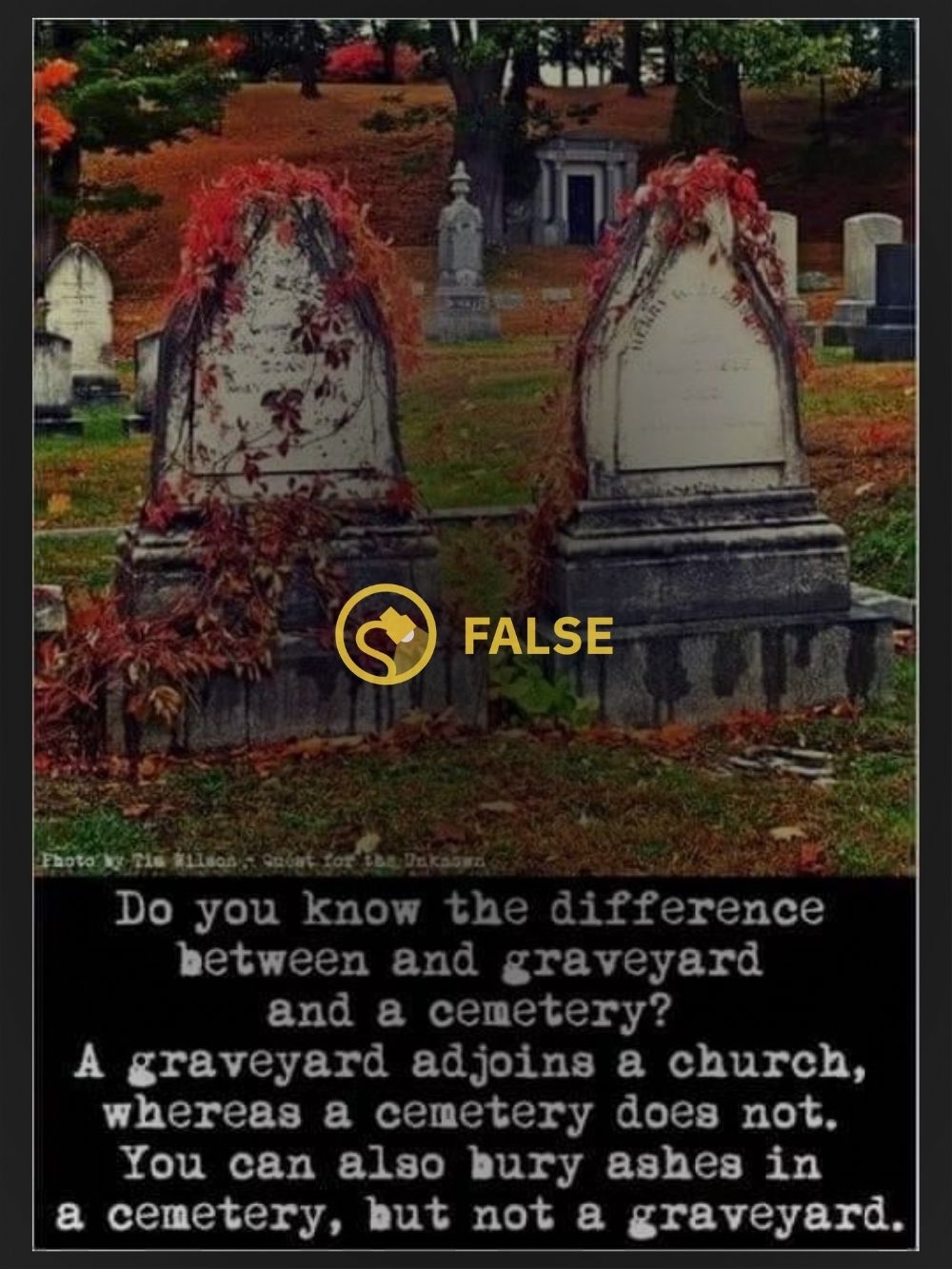无论词源或墓地历史如何,最终,每个人都会死亡。

【原文】
With the arrival of Halloween 2020, we inevitably receive questions about those most hallowed of scary places: the graveyard and cemetery.
A meme that has been making the rounds since 2019 resurfaced with details about burial places that we at Snopes had never heard of previously, so we decided to excavate some history.
The meme claimed that the difference between a graveyard and a cemetery was that a graveyard adjoins a church, while a cemetery does not. The meme also claimed that one can bury ashes in a cemetery, but not in a graveyard.
We dug in to discover interesting tidbits that showed not only are the above claims incorrect, but the alleged differences between the two forms of burial grounds boil down to etymology, history, and religious rules.
“The Work of the Dead” described the shift within the Church’s approach to cremation:
As corporeal resurrection became less theologically and emotionally exigent, the representational power of putting a dead body in ground from which it would rise again incorruptible diminished; cremation—in a sense the rapid release of a spirit from its fleshly prison—became more plausible.
Now, the most straightforward answer on where one can bury ashes of the deceased, according to experts, is: it depends, but the meme was definitely not accurate. John Troyer, director of the Centre for Death and Society at the University of Bath, told us, “You can bury cremated remains in graveyards. I’ve watched it happen.”
According to Sloane, “Some graveyards may prohibit the interment of ashes. Some cemeteries may have done so as well, say Catholic cemeteries where for decades […] cremation was prohibited.”
Laqueur agreed, saying “It depends on who controls the graveyard […] when it’s not religion, it depends on the community. In other words, if a cemetery is owned outside of a small Southern town, it is perfectly possible that they wouldn’t allow X,Y, and Z, that they would allow somewhere else.”
By 1885, Britain had its first legal cremation in the country’s first legally authorized crematorium. In the 1950s, the Catholic church allowed cremated remains to be buried with religious services as long as the ashes remained together and were not scattered, according to “The Work of the Dead.” Today, Catholic church guidelines urge that cremated remains be preserved in cemeteries or other approved sacred places, and “raises no doctrinal objections to this practice, since cremation of the deceased’s body does not affect his or her soul.”
The Catholic church also stated: “When, for legitimate motives, cremation of the body has been chosen, the ashes of the faithful must be laid to rest in a sacred place, that is, in a cemetery or, in certain cases, in a church or an area, which has been set aside for this purpose, and so dedicated by the competent ecclesial authority.” The Catholic church is still, however, opposed to the scattering of ashes.
Conclusion
Today, the difference between graveyards and cemeteries is non-existent. Historical differences existed between churchyards and cemeteries that gradually went away in modern day usage. The interment of ashes is also dependent on the rituals of the community the burial site is tied to. The information in the above meme is misleading and incorrect, which goes to show that some claims should just remain buried.
Help Supercharge Snopes For 2020
We have big plans. We need your help.
